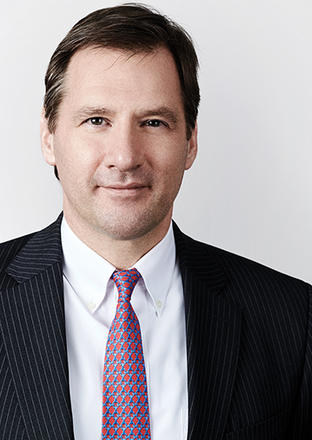Unibail bond issuance spree creates a retail behemoth
After its acquisition of mall operator Westfield, Unibail-Rodamco raised €5bn from a bond issuance as part of its asset-disposal plan to pay off debts. David Wigan reports.
When Unibail-Rodamco announced in December 2017 a $16bn deal to buy shopping mall operator Westfield, it was already Europe’s biggest commercial landlord. However, in one fell swoop it went from regional leader to global behemoth.
Westfield had grown from small beginnings in Australia to operate some of the highest earning malls in the US and the UK, but had seen its share price fall amid fierce online competition. Paris-based Unibail offered a combination of cash and stock that valued Westfield at an 18% premium to its traded price. The offer was unanimously recommended by Westfield’s board, and the largest real estate transaction since 2013 was completed in June.
The magnitude of the deal reflects Unibail-Rodamco’s broader strategy. The company had been selling smaller assets in its European retail portfolio and reinvesting the proceeds in larger malls that may be more resistant to the growth of online shopping. The company had a development pipeline of €13bn as of December 2017.
“The announcement of the Westfield deal was the culmination of a process over a number of years in which both companies reflected on where the future of retail was leading us,” says Jaap Tonckens, group chief financial officer of the combined business. “Our view was that it will be dominated by destination shopping centres, the internet and convenience. With that in mind, both groups had pruned quite vigorously to achieve a very high-quality portfolio.”
Hidden complexity
When the deal was announced on December 12, Unibail had put in place bridge finance with Goldman Sachs and Deutsche Bank for €5bn, the cash portion of the transaction, which accounted for about 35% of the total. The remainder was in shares. The company planned to refinance the loan with a €2bn deeply subordinated perpetual hybrid and a subsequent €3bn multi-tranche senior bond.
“On the face of it the financing structure was pretty simple, but beneath the surface there was a fair amount of work done to optimise the consideration, retain the company’s strong credit rating and provide liquidity to stakeholders in Australia,” says Mr Tonckens. “Detailed discussions on the financing started in October and went on over the next couple of months.”
The bridge loan on the transaction was syndicated on the same morning that the transaction was announced, attracting some €11bn of demand. At the same time the company executed a swap to put in place a foreign exchange hedge. The syndication was completed at the end of January. In the interim the company obtained regulatory clearance for the hybrid, which was planned to be sold ahead of the senior transaction and would be the first public hybrid security issuance by a European real-estate investment trust (REIT).
“The hybrid got 50% equity credit, so was junior to the bond, and it made sense to layer that in first, which would have the effect of giving bond investors comfort that they had more protection,” says Mr Tonckens. Moody’s assigned a Baa1 rating to the hybrid, two notches below Unibail’s long-term issuer rating of A2. Following a roadshow, the dual-tranche security was priced on April 17, attracting some €6.8bn of orders.
Senior issuance
At the end of 2017 Unibail had a loan-to-value ratio of 33%, and pro forma for the Westfield transaction that rose to 37%, a relatively comfortable level given the company’s €62bn of assets. It plans to refinance some upcoming bond maturities through further disposals.
With this part of the deal complete, the company turned its attention to the senior issuance, for which it also required regulatory approval. Once that was obtained it was keen to get to market as quickly as possible, and instructed Crédit Agricole, Deutsche Bank, Goldman Sachs, JPMorgan and Société Générale as co-global co-ordinators.
The structuring of the deal reflected the company’s plan to dispose of assets (generating cash to pay off debt), along with its desire to extend its maturity profile and meet investor needs.
“There were a number of drivers,” says Mr Tonckens. “It made sense to do a short maturity as we knew we were going to generate more cash in the short term (through disposals) and then we wanted to try to create a slightly longer maturity profile to reflect our long-term assets.” The average maturity of Unibail debt was 7.2 years at the end of 2017.
The company settled on four tranches – an €800m three-year, an €800m 7.3-year, a €900m 12.7-year and a €500m 20-year. Coupons ranged from 0.125% to 2.25%.
A day’s work
The deal went ahead on May 2, 2018, and interest grew steadily through the morning, enabling the company to tighten initial price talk. As demand grew, pricing was further tightened to inside the tight end of guidance for the three- and seven-year bonds and the tight end for the 12-year and 20-year. The combined order book came to about €5bn. New issue premiums were three to eight basis points (bps) on the shorter-dated bonds and about 17bps on the 12-year and 20-year.
“The book may not seem huge but this was the largest bond offering by a REIT and only the second corporate 20-year this year, so we were happy,” says Mr Tonckens. “An interesting aspect of the book was the high proportion of asset managers. The fact they found that coupon attractive is perhaps a sign that the market does not see benchmark rates heading higher anytime soon.” Good news for the issuer, and, by extension, happy days for those partial to retail therapy.



